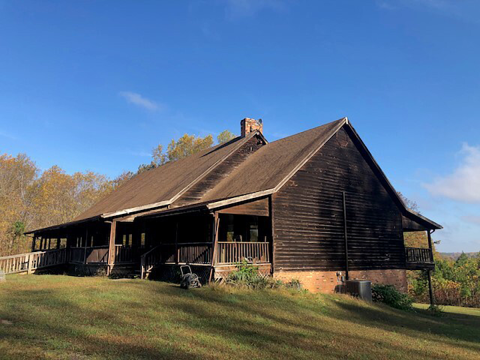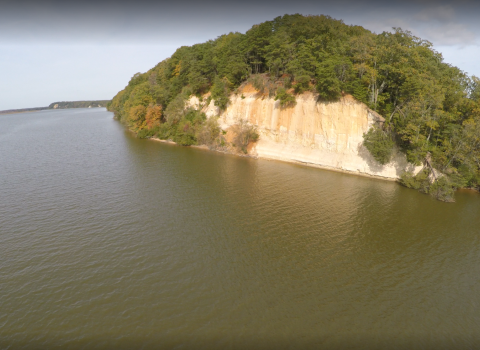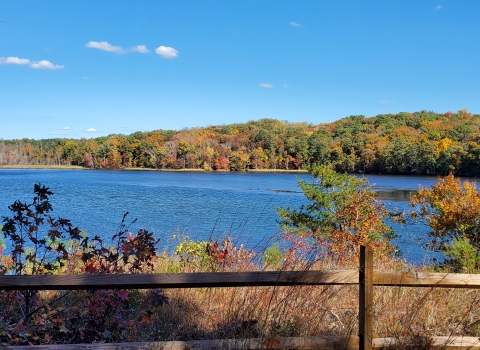Indian Neck, Virginia – The U.S. Fish and Wildlife Service and Bureau of Indian Affairs have announced the donation and transfer of Cat Point Creek Lodge, located on the Rappahannock River Valley National Wildlife Refuge in Warsaw, Va., to the federally recognized Rappahannock Tribe.
The successful donation now allows the Rappahannock Tribe to renovate the Cat Point Creek Lodge to serve as an Indigenous Environmental and Conservation Education Center. Tribal citizens and the public will learn about Indigenous knowledge practices for stewarding the land through a program of exhibits, classes and outdoor activities.
Today’s announcement furthers the Interior Department’s ongoing work to strengthen Tribal co-stewardship of public lands and waters. Over the last two years, the Department has celebrated several significant and innovative co-stewardship arrangements providing Tribes a greater role in the management of federal lands and waters that have cultural and natural resources of significance and value to their respective communities. In April 2022, Secretary of the Interior Deb Haaland and Service Director Martha Williams celebrated the Rappahannock Tribe’s re-acquisition of 465 acres at Fones Cliffs.
“Relationships, knowledge-sharing and co-stewardship with Indigenous peoples are essential to the Service mission,” said U.S. Fish and Wildlife Service Director Martha Williams. “The transfer of Cat Point Creek Lodge to the Tribe is a prime example of the collaboration between the Service and Tribes to protect cultural, trust, and treaty resources on Service lands, in support of our shared priority of conserving fish, wildlife, and their habitats.”
“Cat Point Creek is the site of the Tribe’s ancestral capital town, so being able to share our history and traditional conservation practices with the public at this significant place is especially meaningful for the Tribe in our mission to preserve our culture for future generations,” said Rappahannock Tribal Chief, Anne Richardson.
When the refuge purchased the Cat Point Creek Unit in 2017, a two-story, 7,520 square-foot structure structure
Something temporarily or permanently constructed, built, or placed; and constructed of natural or manufactured parts including, but not limited to, a building, shed, cabin, porch, bridge, walkway, stair steps, sign, landing, platform, dock, rack, fence, telecommunication device, antennae, fish cleaning table, satellite dish/mount, or well head.
Learn more about structure was located on the property (referred to as the “Lodge”). Transferring the Lodge to the Tribe advances the Service’s priority of co-stewardship with Tribal Nations.
The Lodge will also serve as the offices of the Tribe’s River Programs and Environmental and Natural Resources departments, working closely with the refuge in a partnership to protect the Tribe’s ancestral lands along the river.
Rappahannock River Valley National Wildlife Refuge was established in 1996 to conserve and protect fish and wildlife resources, including endangered and threatened species and wetlands. Since its inception, the refuge has served as an outdoor classroom where students of all ages study nature’s complexity, contributing to their understanding and appreciation of the natural world and the National Wildlife Refuge System.
“Our work at the Bureau of Indian Affairs is to enhance the quality of life, promote economic opportunities, and carry out the responsibilities to protect and improve the trust assets of American Indians, Indian Tribes and Alaska Natives,” said BIA Director Darryl LaCounte. “This successful transfer not only upholds our trust responsibilities but demonstrates that by working together, all can benefit equally.”
###
The U.S. Fish and Wildlife Service works with others to conserve, protect and enhance fish, wildlife, plants and their habitats for the continuing benefit of the American people. For more information, visit www.fws.gov, or connect with us through any of these social media channels: Facebook, X (formerly Twitter), YouTube and Flickr.
The Bureau of Indian Affairs directly administers and funds Tribally operated infrastructure, law enforcement and justice, social services (including child welfare), Tribal governance, and trust land and natural and energy resources management programs for the Nation’s federally recognized American Indian and Alaska Native Tribes through four offices: Indian Services, Justice Services, Trust Services and Field Operations.







